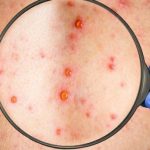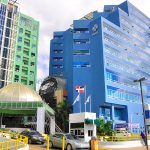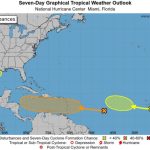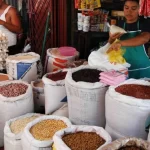The Government will assume national policy for blood supply; 16 centers will supply the entire country
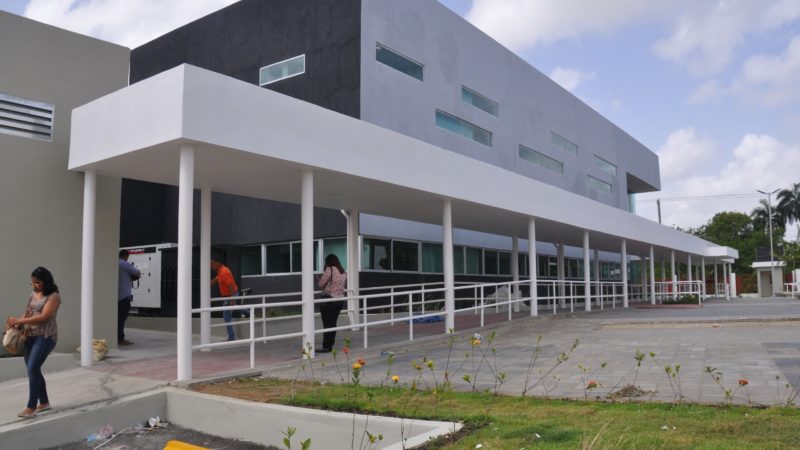
Construction of Hemocenter in the health city in order to provide priority to public hospitals, and motivate the population to be a voluntary blood donor. In Photo: Rosa María Suarez, Ing. Héctor López and Dr. Eduardo Urraca. Today / Arlenis Castillo
The Government will assume the national policy of the blood supply for all the regions of the country providing the vital fluid to save lives in cases of emergencies, surgeries and other serious situations.
The statement corresponds to Dr. Sócrates Sosa Peña, director of the National Hemocenter, an infrastructure that seeks to address the blood deficiency and raise the donation capacity of the Dominican Republic.
To reach people. Sixteen facilities will be derived from the Hemocenter and will supply the entire public network and the private sector.
Those of the East region will be located in Higüey, to guarantee access to the entire tourism sector; and in San Pedro de Macorís.
There will be a center in San Cristóbal, one in Azua, another in Barahona and in the same region, in San Juan, the sixth unit will be completed so that the blood can reach the people so they won’t have to go looking for it. “It is the blood that should wait for the patient and not the patient for the blood,” said the hematologist.
Santiago de los Caballeros, San Francisco de Macoris, La Vega, Puerto Plata, Mao and Moca will also have a center.
In the case of Santo Domingo and the surrounding areas, the doctor explained that there will be nodes or unit facilities in the maternity Our Lady of La Altagracia and also in the hospitals Darío Contreras, Francisco Moscoso Puello, and Robert Reid Cabral.
“There will be a single network for all the facility units because there is no public and private blood type,” said the hematologist, pointing out that it seeks to end an old accumulated social debt that has affected Dominicans for years.
Reality. In the first month, we aspire to supply 22 thousand units of blood from the Hemocenter. The blood would be from volunteers and it will go in ascending form until it reaches the 115 thousand units that will be supplied. “We hope that the country can handle 250 thousand units a year, which is the national need,” the doctor insisted when speaking on the subject.
There would be around 20 thousand units of blood per month, but the theme is to make a change of culture from the replacement model to the generous and altruistic donation. “We hope that three for every 1,000 Dominicans donate at least twice a year on a voluntary basis,” Sosa said.
The blood deficit in the country is around 180 thousand units per year.
In the Dominican Republic, there are 62 blood banks, half of which belong to the Ministry of Public Health.
The rest of the centers are managed by the private and military sector. It is projected that in three years the Hemocenter can optimize the work of collecting and processing the blood.
“Blood is a public right and, as such, it should also be used for free, prioritizing vulnerable sectors and people with limited economic resources,” said Sosa.
Very important “If the population does not become empowered and learn to donate, the Hemocenter will not have blood. That is a great truth,” says Sosa, noting that without the donors the Hemocentro would be a blood bank, with a lot of technology and expensive equipment.
With the new blood policy, the public network will be prioritized, but agreements will be made with the private sector. A Hemocenter does not work without blood, so there will be mobile units to collect blood and units to transport it to the centers of the network.
The collections will be made in squares, universities and wherever there are people and teams can arrive in units. Blood is then taken to the Hemocentro for processing and subsequent distribution, said the Health Ministry official.
Ready. The Hemocentro is ready and President Danilo Medina is expected to have a date to initiate it, said an official from the Social Cabinet. Once it is delivered, it will take about two months and then the blood distribution will gradually begin.
The opening plan includes the unification of the tests that are carried out, which will begin in Greater Santo Domingo. All blood from public facilities will be analyzed with the same standards.
“We will start with the public centers and the private ones will be incorporated as the management agreements are signed so that the blood can come and go,” said the medical manager.
24 hours. The Hemocentro will have a 24-hour schedule but will not provide services to people but to the health centers of the network, insists Sosa, who works intensively to materialize the opening of the center.
They intend to end the chaotic search for blood when a relative is on the way to the emergency operating room.
The Red Cross. It is a non-profit organization that will continue to function and could be studied if it wants to join the network as a unit, said Sosa about the Red Cross.
That entity has a good structure and may have lacked working on voluntary blood donation. Most of those who go are replenishment or family members of the patient who go with a need. “If they are willing to join the network as a node, then an agreement can be made so that they continue to operate as such,” he said.
Red Cross Speaks. Dr. César Matos, director of the Blood Bank of the Red Cross, views the State’s taking charge of the blood issue with positivity. The Red Cross contributes 50% of the blood used in the Dominican Republic.
The entity has four centers: Santo Domingo, Santiago, San Francisco de Macoris, and La Romana. Each day they collect between 250 to 300 units of blood, from an equal number of donors.
Matos says that less than 1% of the blood donated at the Red Cross is voluntary: the majority is for replacement for sick family members.
Voluntary donation Mass campaigns will not be done, but promoters will be trained who will work directly with the people for the motivation of the voluntary donation, says Sosa. At least six promoters are expected to go to companies and public and private institutions.
These promoters will seek to motivate people to donate their blood voluntarily and for companies to open the doors so that Hemocentro technicians come to do the collections that are required in the country.
“People do not donate, because nobody asks for it. And that has led to the development of interest groups and businesses that do their job well and others that, without judgment, make an overlapped payment to donors,” he said.
Sosa went to Barcelona to have all the details of the Catalan experience around this topic.
The authorities are in the process of acquiring the mobile units and the transportation equipment so that no one has to wait for the blood or die due to unavailability.




